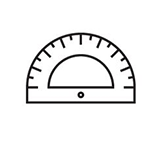콤프소그나투스(Compsognathus)
| 국내/해외배송 | |
|---|---|
| 배송비 방법 | 택배 |
| 배송비 | 4,000원 (50,000원 이상 구매 시 무료) |
| 수량 |
|
| 상품 정보 | 가격 | 삭제 |
|---|---|---|
| [총 상품금액(수량)] 0 (0개) | ||
Joseph Oberndorfer discovered this Compsognathus fossil in Bavaria, Germany, in the 1850s. Shown here is a cast at the Oxford University Museum of Natural History.
화석명 : 콤프소그나투스 롱기페스(Compsognathus)
학명 : Compsognathus longipes
지층 : Solnhofen
원산지 : Germany
시대 : 중생대 쥐라기Upper Jurassic, Lower Tithonian
Size : 28cm * 31cm
Compsognathus (pronounced /kɒmpˈsɒgnəθəs/, Greek kompsos/κομψος; "elegant", "refined" or "dainty", and gnathos/γναθος; "jaw") was a small, bipedal, carnivorous theropod dinosaur. The animal was the size of a turkey and lived around 150 million years ago, the early Tithonian stage of the late Jurassic Period, in what is now Europe. Paleontologists have found two well-preserved fossils, one in Germany in the 1850s and the second in France more than a century later. Many popular presentations still describe Compsognathus as a "chicken-sized" dinosaur because of the small size of the German specimen, which is now believed to be a juvenile form of the larger French specimen. Compsognathus is one of the few dinosaurs for which the diet is known with certainty: the remains of small, agile lizards are preserved in the bellies of both specimens. Teeth discovered in Portugal may be further fossil remains of the genus.
Although not recognized as such at the time of its discovery, Compsognathus is the first dinosaur known from a reasonably complete skeleton. Today, C. longipes is the only recognized species, although the larger specimen discovered in France in the 1970s was once thought to belong to a separate species, C. corallestris. Until the 1980s and 1990s, Compsognathus was the smallest known dinosaur and the closest supposed relative of the early bird Archaeopteryx. Thus, the genus is one of the few dinosaur genera to be well known outside of paleontological circles.
Description
For decades, Compsognathus was famed as the smallest dinosaur known; the specimens collected were around 1 meter (3 ft) in length. However, dinosaurs discovered later, such as Caenagnathasia, Microraptor and Parvicursor, were even smaller. Compsognathus is estimated to have weighed around 3 kg (6.5 lb).
Compsognathus was a small, bipedal animal with long hind legs and a longer tail, which it used for balance during locomotion. The forelimbs were smaller than the hindlimbs and featured three digits equipped with solid claws suited for grasping prey. Its delicate skull was narrow and long, with a tapered snout. The skull had five pairs of fenestrae (skull openings), the largest of which was for the orbit (eye socket).The eyes were large in proportion to the rest of the skull.
The lower jaw was slender and had no mandibular fenestra, a hole in the lower jawbone commonly seen in archosaurs. The teeth were small but sharp, suited for its diet of small vertebrates and possibly other small animals, such as insects. Its frontmost teeth (those on the premaxilla) were unserrated, unlike those further back in the jaw. Scientists have used these dental characteristics to identify Compsognathus and its closest relatives.











 확대보기 및 상세정보
확대보기 및 상세정보